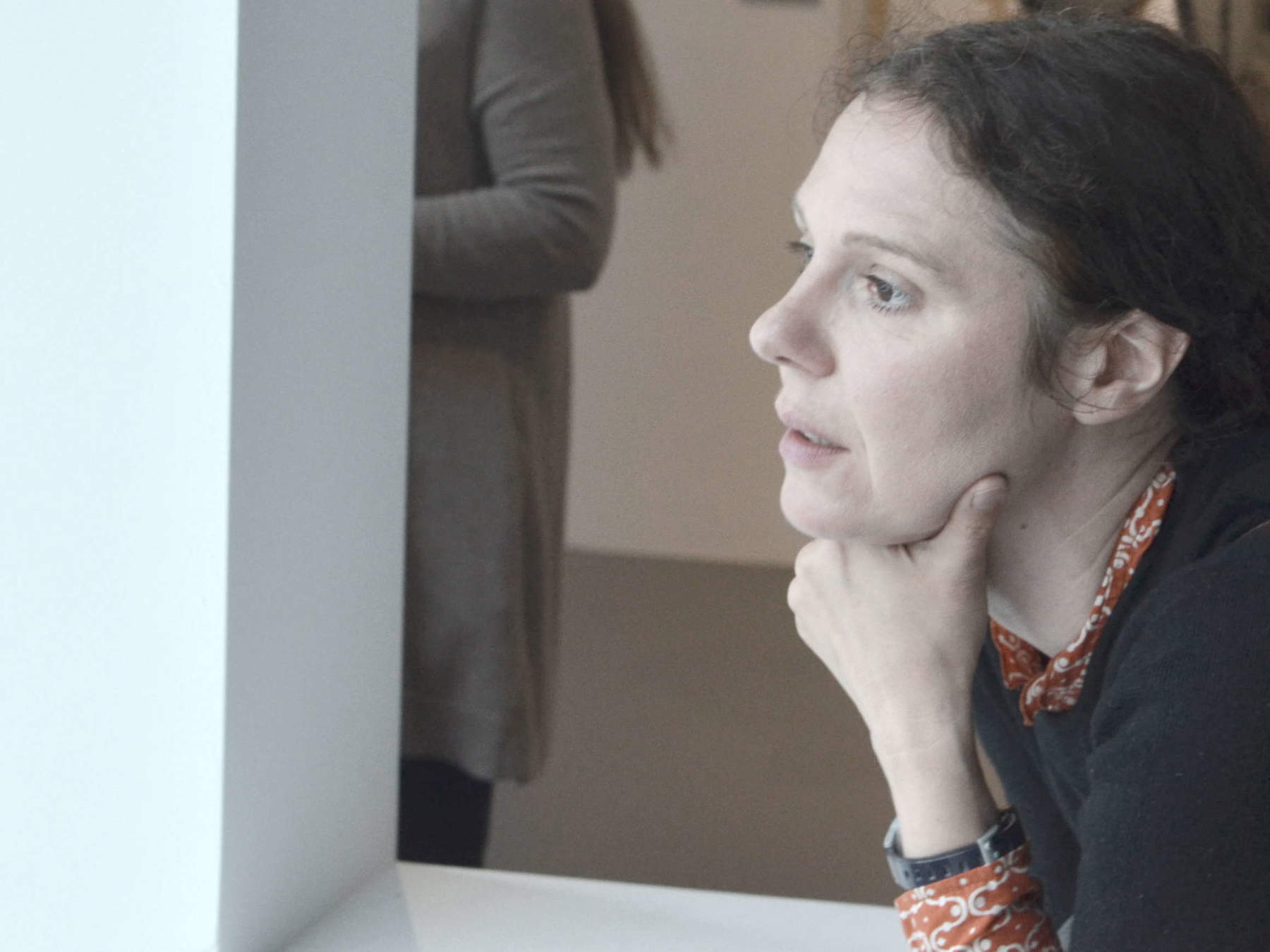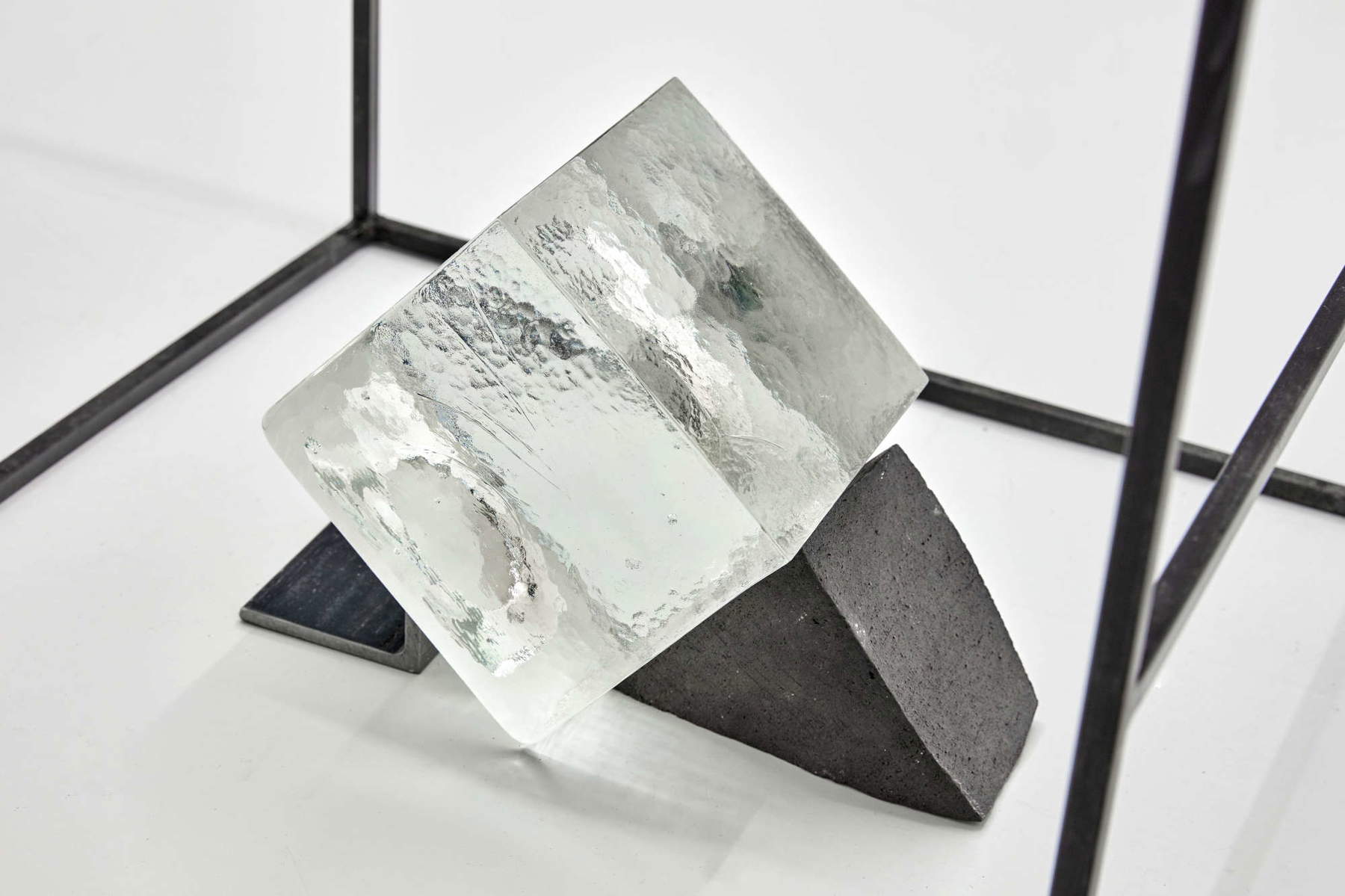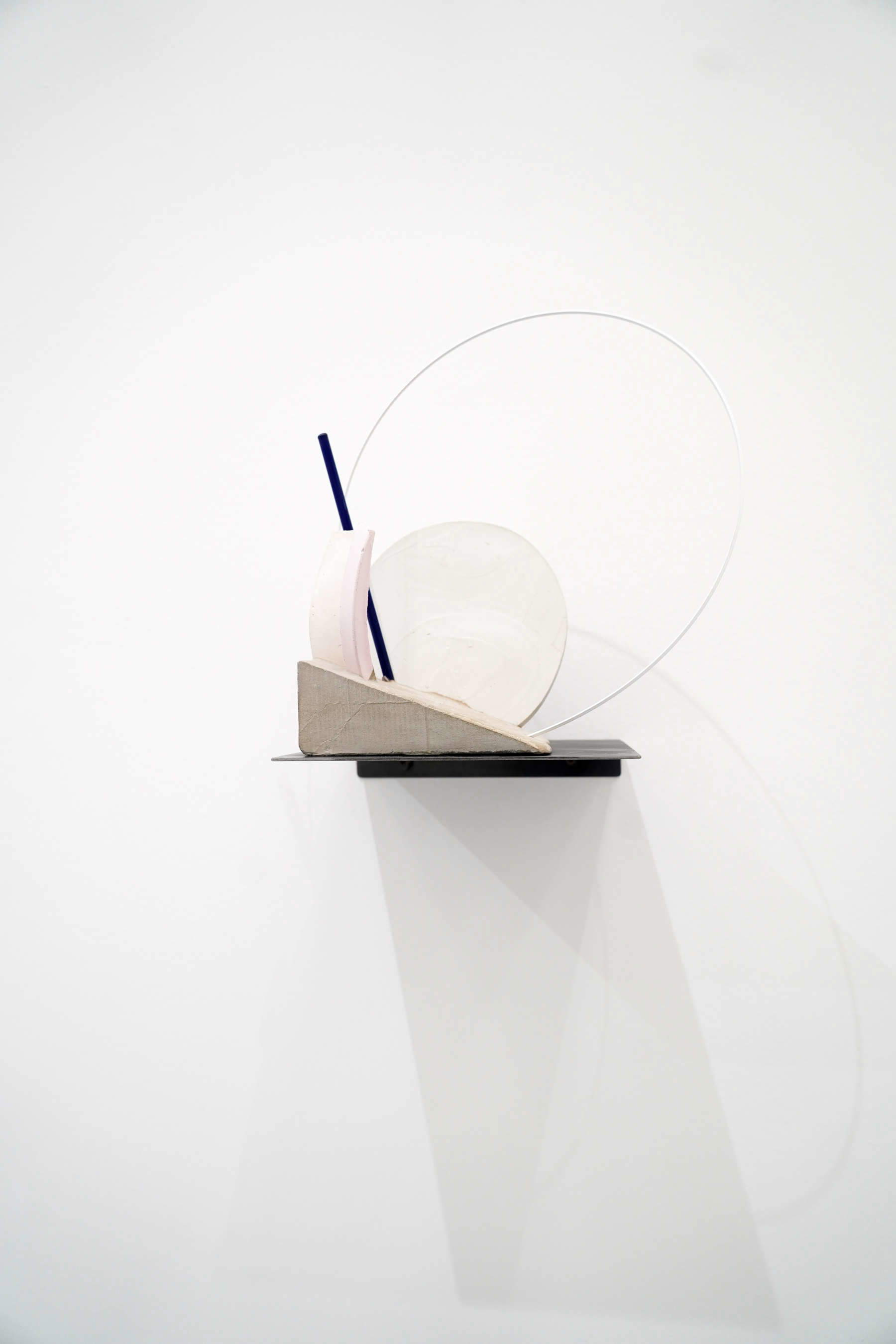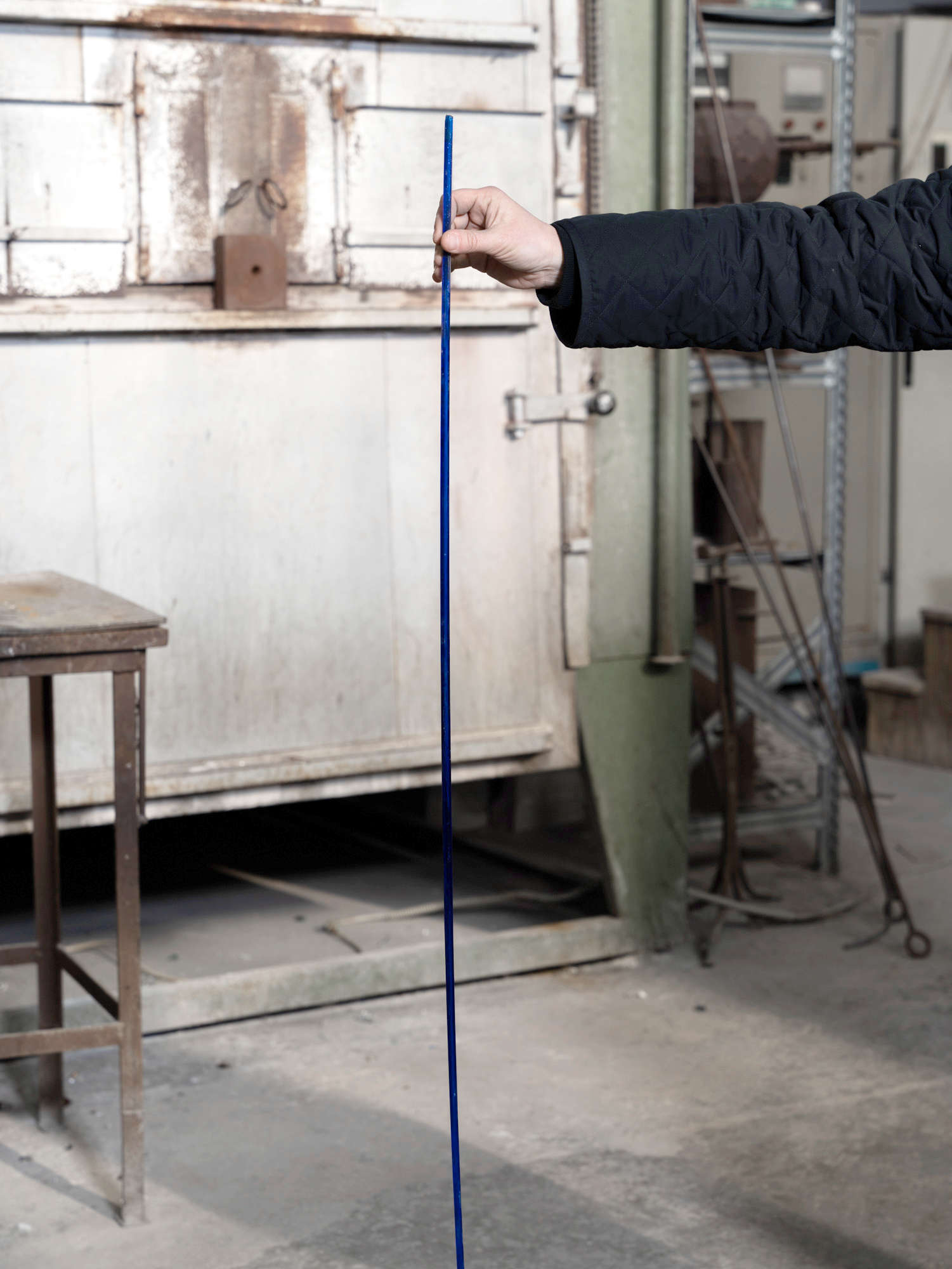Sculpture, according to Alice Cattaneo, is a living organism, always poised between balance and collapse, between construction and disintegration, capable of transforming every gesture into a thought form and every tension into a poetic possibility. Through a sculptural thought that interweaves matter, space and time, Cattaneo, in this conversation with Gabriele Landi, tells us about an approach that stems from the body, dialogues with gravity and is built by friction.
Born in Milan in 1976, Alice Cattaneo earned a BA (Honours) in Environmental Art from the Glasgow School of Art in 2001 and an MFA in sculpture from the San Francisco Art Institute in 2004. She has collaborated on solo exhibitions in institutional spaces such as the Ikon Gallery in Birmingham in 2007, with the MADRE museum in Naples in 2008, with Galerie Stadtpark in Krems in an exhibition with Fred Sandback in 2012, with the Museo del Novecento in Milan in 2018, on the occasion of Una Boccata d’Arte in 2021, with the Casamadre Arte Contemporanea Gallery in Naples in 2023, with the Galleria d’Arte Moderna in Turin on the occasion of the exhibition Dove lo spazio chiama il segno, curated by Giovanni Giacomo Paolin, 2025, now in progress. He has participated in group exhibitions in various institutions including: the MAXXI in Rome in 2007; Palazzo Grassi in Venice on the occasion of Italics, Italian Art between Tradition and Revolution in 2008; the Musée d’Art Moderne in Saint-Etienne in 2009; the Today Art Museum in Beijing; the Hangar Bicocca in Milan in 2010; the Collezione Maramotti in Reggio Emilia and the Frankfurter Kunstverein in 2011; the ZKM Center for Art and Media in Karlsruhe in 2019; Villa Olmo in Como in the exhibition Astratte, Women and Abstraction in Italy 1930 - 2000 in 2022; the Italian Cultural Institute in New Delhi in 2024.

GL. For many artists childhood corresponds with the golden age the one in which images and processes begin to settle that somehow become valuable for later developments. Was that the case for you as well?
AC. I grew up dividing my time between the city and the country. They were two very stimulating but at the same time contradictory worlds and environments. The urban landscape, of the Milan of the 1980s and 1990s still full of history and at the same time stretched toward a very fast development, and the time spent in the countryside, in a landscape with traces of rurality, made of the last remnants of cultivated fields and fog, are images that I cherish and cultivate through my work.
What studies have you done? Were there any important encounters during your formative years?
I studied Environmental Art at the Glasgow School of Art in the late 1990s and early 2000s. Here I was confronted, through dialogue with teaching artists, with the tight idea of site-specific work understood as a relational project dedicated to public space. At the School of Art I had the opportunity to meet artists such as Claire Barclay and Martin Boyce. In the city, I had the opportunity to see in the first independent spaces the exhibitions of artists like Karla Black and Lucy Skaer and witnessed the performances of Rirkrit Tiravanija. Then I moved to California, where I earned an MFA in sculpture at the San Francisco Art Institute in 2004. I studied with American artists close to Minimal, Performance and Conceptual Art who encouraged me to dissect a personal poetics combined with a practice that evolves through very free processual modes. At the Art Institute I met artists and faculty such as George Kuchar, Doug Hall, Paul Kos, the Matmos and attended lectures by the likes of Pipilotti Rist, James Turrell and Jerry Saltz. During this period of study between Glasgow and San Francisco I internalized two very different ways of conceiving art practice that led me, also thanks to my first solo exhibitions in Milan, to a kind of mediation between these two cultures of art making.







How do you proceed in your work and what guides you in the choice of materials you employ?
In the very first works, complex ephemeral architectures made in space, I would choose very simple materials, such as balsa wood and scotch tape. I was trying to refine the relationship between the sculpture and the stage machine of the exhibition space. The material should not overpower the context but reveal it. In recent sculptures, on the other hand, I dwell on the characteristics inherent in the materials, seeking an adherence to the image that originates the work. So I began to collaborate with artisans and craftsmen related to the contexts in which I find myself in some cases working. The places of transformation of materials, such as workshops, kilns, and foundries, often suggest to me the signs in space on which I want to orient myself. The new works produced for the exhibition Where Space Calls the Sign now underway at GAM in Turin for example follow this vision.
How important is the force of gravity in your work?
The force of gravity is the soul of sculpture. It represents the life breath of matter. For me it is an element to be challenged, at other times to be accompanied and followed through making. I am interested in observing what happens when materials do not withstand the force of gravity. When matter is on the verge of giving way, either because of weight or because of the way it is assembled or rests on the ground, it means that something is happening, that the work becomes vital. I observe it in its unraveling as it finds its own principle of existence: standing or letting go, coming to terms with gravity. The moment of disequilibrium before balance, that space just before stability interests me greatly.
What role does the body play in what you do?
The body is the first fixed point. It marks a punctuality in space: being there. The sculpture is a precipitate, something that happens from one body to become another body. I am interested in conveying a sense of happening, as if the work has just come into the world the moment you encounter it with your gaze. It is an invisible, mute dance. Gertrude Stein wrote in her Tender Buttons, “the center is by standing.”
Are you interested in the idea of construction?
I am interested in the idea of construction because it is the access to the idea of de-construction. Like the space that exists between the force of gravity and the fall: at this juncture is the gap where construction is placed.
How do different materials resonate with each other?
Materials represent a duality; in principle they are almost never in harmony. I choose them because they manifest a contrast. It is the friction that interests me. Overcoming it is the most difficult step, it is the moment when the work in the space begins, when the first small piece of sculpture becomes a presence. The joints, the connections between materials are always complex but sense-generating moments. As in the case of the large rough wooden structure, Verso l’intorno, made for the contemporary rooms of the GAM in Turin. The intervention takes up the perimeter of the space itself, orienting it toward vanishing points outside the museum and beyond the city grid. As if the original context was, conceptually, slightly twisted back on itself orienting the gaze toward another dimension. This temporary architecture has become the connecting element between all the works in the exhibition and the rooms of the museum.
Does drawing have an importance in your work?
I draw to reason, to put together ideas, fragments of thought and images that pass quickly through the mind. Then I re-emerge from tracing these marks and realize that they are complex drawings. Paul Icarus, a dear friend, in front of one of my sculptures told me, “in the object there is the design.” So I realized that in the structure there is already the design. In a recent work now exhibited at the GAM in Turin, Cosmografia blu, composed of glass lines that run horizontally through space, the graphite and watercolor drawing interrupts the course of the horizon, becoming a very subtle trace and continuation of the glass itself, like a matrix of meaning.






I saw that you have made a series of short videos: can you talk about them?
Video for me is a material. In fact it is often projected or displayed on old television sets where the imperfections of video reproduction on the screen are visible and audible. The films are very short, I imagine them as signs in the monitor or projection space just as the materials are signs in the exhibition context. Observing them in the time of the video image is a way to talk about rhythm and sound, elements that I feel are very close to my way of conceiving sculpture. Then they often represent small actions that refer back to big questions of the movement of time.
Are you interested in the idea of working for specific spaces?
I really like working in the specific spaces because they “disorient” the work, it is a way to tension the idea of the work, make it emerge from its original environment, which is a deep place of elaboration. The materials then carry with them into the specific spaces traces of the contexts where they were generated, for example, the intrinsic memory of the furnace in the case of glass, or the studio as a place of design in the case of architectural interventions. It is surprising thus to see how everything intersects in the atmosphere of the context and distant worlds find a common space-this still point is the work.
Are you interested in the idea of tension?
Tension generates the work, I am interested in finding that degree of tension that comes to be harmony at the edge. Latent harmony. Sculpture is made of this question of tension, even when it relates to the exhibition space.
What do you think beauty is?
When something very heavy and complicated finds its voice in a breath. Arturo Martini said, “the work of art is elusive.”
Warning: the translation into English of the original Italian article was created using automatic tools. We undertake to review all articles, but we do not guarantee the total absence of inaccuracies in the translation due to the program. You can find the original by clicking on the ITA button. If you find any mistake,please contact us.